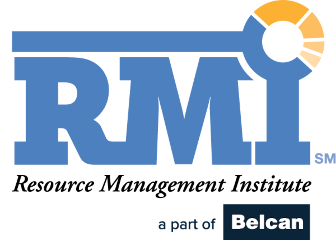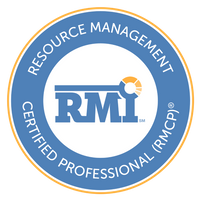Technology Organizations Need to Leave Poor Resource Capacity Planning Processes Behind
PMO leaders report that in the new adaptive marketplace, resource capacity planning remains a major challenge. When working with several different kinds of planning methodologies, it becomes even more crucial to gain a single version of the truth. We need to not only utilize the different levels of skills, but also navigate complex organizational structures and transform management practices. The technology sector in particular struggles with remaining innovative and responsive with customer-facing products.
These issues occur for several reasons, perhaps best expressed by Margo Visitacion in Forrester’s recent strategic portfolio management research report:
“Resource management is second only to scope changes among project managers’ top challenges…(and) manual resource forecasting using disparate tools compounds the problem.”[1]
The reasons resource capacity planning is important are simple: projects won’t get done if there aren’t adequate resources to complete them, and you can’t understand what you can get done if you don’t know what you need. Visitacion outlines some bad habits – spreadsheet-dependence among them – that will block your PMO teams from finally getting a handle on accurate resource forecasting and thriving as a strategic technology business partner. Here are my favorites from the report, with some additional anecdotes from our client-based experience:
1. You Can’t Focus on Customer-Facing Products
Visitacion is adamant about structuring your processes to enable customer-facing, digitally-empowering projects. This aligns with what we see and hear in the field too – organizing teams by product line using governance of intake and resource demand planning helps grow the business and build on successes. This requires using a skills database for resources to ensure that they have adequate resources to plan and staff projects. Resource alignment and utilization in their customer team against the most valuable priorities empowers streamlined project delivery toward the highest priority work.
Visitacion asserts that “moving people from project-to-project or having them work part-time on a project prevents them from developing empirical knowledge and building trusted relationships. Continual task-switching creates bottlenecks because it takes time to regain focus on the task at hand.” Keeping agile teams together from project start-to-finish, and not utilizing every percentage point for every resource may feel counter-intuitive at first – but your results contradict the illusion.
2. You’re Stuck with Waterfall-based Resource Planning
Visitacion encourages lean and agile practices to improve productivity and describes “utilization-based resource planning” that assumes a specific time interval for delivery of every product as woefully inept for “highly creative processes such as software development and design.” Customer-facing innovation often shows up on your PMO doorstep as a digital innovation. If you are using this old capacity planning approach, based only on waterfall calculations that do not take into effect the special needs of your highest value projects, you will miss the cost reductions the agile responses drive.
An educational services provider client lived the results of using resources in an agile, product-focused way by making automation a core element of their business. This allows a modern, digitally-empowered enterprise with complex architecture and systems to gain transparency into resource consumption at the portfolio and organizational level.
One of our best European clients put it like this: “The program’s functionality fit our objectives of flexibility for multi-organization usage, resource optimisation, and workflow control.” If your workflow is agile, your resources must be deployed that way, too. Otherwise, you’ll never be in-tune with your more strategic, customer-facing projects. And your executive sponsors will notice.
3. You Can’t Seem to Focus Resources on the Right Projects
The report also encourages readers to “apply techniques such as value-stream mapping and Kanban (to) help companies used to critical-path scheduling identify improvements to existing practices without having to implement wholesale changes.” While project prioritization is always important (and a separate conversation), resource prioritization is equally important. Agility at scale requires an ecosystem: ensure from multiple angles that resources are deployed to the highest value work, and the work that is being prioritized is indeed the best for the business.
The best solution is in fact a combination that works well together, such as CRM to JIRA to ERP to financials – with an API that can harmonize nearly any set of applications you own to deliver unparalleled transparency and arm your agile resources to execute flawlessly. This allows teams to work in a system they are comfortable in (and is best at what they do) but also to maintain visibility for better prioritization and management. Complex resource allocation involvements no longer hold up and are replaced with techniques which take the best ideas of agile and use automation to focus your teams on the right projects to meet your organization’s strategic and revenue objectives.
Resource planning is challenging, but also incredibly important to the success and longevity of the organization. There are a lot of ways capacity planning can go wrong, but getting it right starts with correcting some of the bad habits that lead to these misalignments. For more on why current resource management practices do not do enough to deliver on customer expectations, and how to improve resource planning, download the full Forrester Report The Agile Organization: Take a Portfolio-Driven Approach to Thrive.
[1] Visitacion, Margo, The Agile Organization: Take a Portfolio-Driven Approach to Thrive. Business Case: The Strategic Portfolio Management Playbook. Forrester January 24, 2018.

Kevin Sequeira
Kevin Sequeira is the Senior Vice President of Product Management for Upland Software and is responsible for delivering customer-driven innovation across Upland’s product lines. He has over 10 years’ leadership in professional services automation, product management, strategic planning with cross-functional success in customer and analyst engagement.




